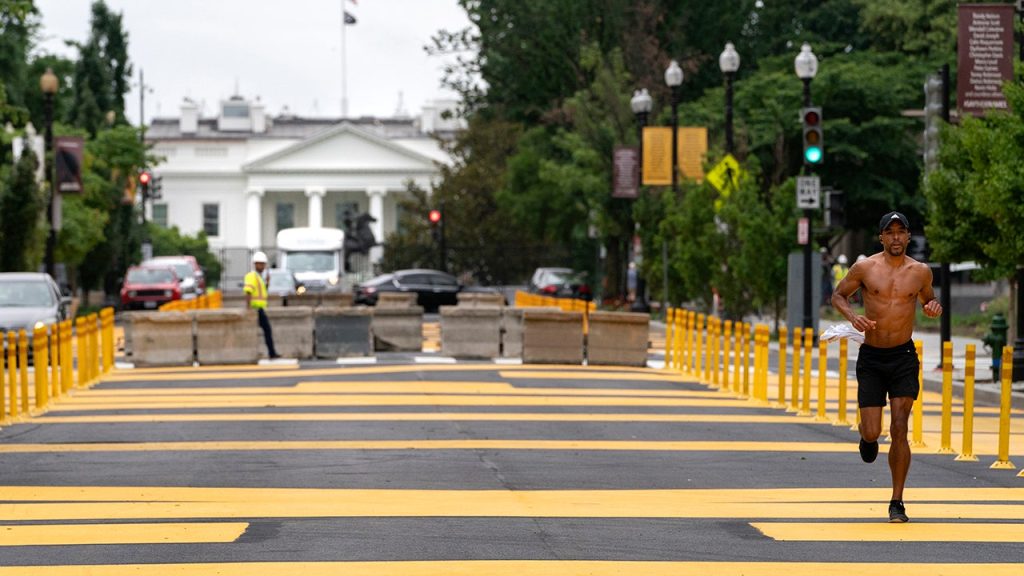The District Department of Transportation (DDOT) has announced that construction is set to begin on Monday to revamp Washington D.C.’s Black Lives Matter Plaza. This initiative is part of the America 250 mural project aimed at enhancing the city’s artistic presence through the involvement of students and local artists. While the transformation unfolds over a timeline of six to eight weeks, officials emphasized that there will be phased closures to mitigate disruption for residents and businesses in the area.
| Article Subheadings |
|---|
| 1) Overview of the Plaza Transformation |
| 2) Background of Black Lives Matter Plaza |
| 3) Community Engagement and Stakeholder Input |
| 4) Timeline and Impact on Traffic |
| 5) Legislative Context and Political Reactions |
Overview of the Plaza Transformation
The District Department of Transportation has initiated plans to transform Black Lives Matter Plaza as part of a broader effort to enrich the aesthetic landscape of Washington D.C. Official commentary from the mayor’s office revealed that this renovation is not merely about repainting but an evolution aiming to honor and inspire the conversations around social justice that the plaza symbolizes. This effort will be integrated with the city’s America 250 mural project, which invites public participation, encouraging local artists and students to utilize their creativity and contribute to the transformation.
Background of Black Lives Matter Plaza
Black Lives Matter Plaza gained prominence in the summer of 2020 after large-scale protests erupted following the tragic deaths of several Black individuals due to police actions. The plaza’s iconic yellow lettering became a national symbol of the Black Lives Matter movement, calling attention to systemic racism and demanding accountability. Initially painted during President Donald Trump‘s administration, it provided not only a physical representation of activism but also a place for community gatherings concerning racial justice. Over the years, the plaza has evolved, mirroring the ongoing dialogues regarding civil rights and perceived inequities within law enforcement.
Community Engagement and Stakeholder Input
Community engagement has been highlighted as a key component of the transformation plan. Officials underscore the importance of collaboration with local stakeholders, including residents and businesses located within the vicinity of the plaza. The DDOT has stated its commitment to working closely with these stakeholders to ensure that the transformation process is smooth, taking into account various opinions and perspectives. This open communication is also intended to foster a community-centric approach to the mural project, allowing those directly impacted by the changes to have a say in the final design and aesthetics.
Timeline and Impact on Traffic
Construction work is anticipated to commence on the upcoming Monday and will span six to eight weeks. The timeline will involve phased closures of certain areas around the plaza, which may lead to temporary disruptions in local traffic patterns. DDOT has assured the public that they will do everything possible to minimize inconvenience and maintain accessibility for both businesses and residents. Crews are expected to work on weekday evenings and weekends, a strategic decision meant to balance operational efficiency and community needs. Clear notices will be provided to help guide the public through this transitional phase.
Legislative Context and Political Reactions
In conjunction with the transformation plans, there have been political discussions surrounding the plaza’s significance and its future. Recently, Mayor Muriel Bowser spoke at a tele-townhall meeting, unveiling the motivation behind the expedited announcement of the project, which partly stemmed from media inquiries. She expressed her opposition to legislative measures, such as the H.R. 1774 bill proposed by Representative Andrew Clyde, which seeks to impose restrictions on funds allocated to the District unless the Black Lives Matter phrase is removed from the plaza. This has sparked debates about the symbolism associated with the plaza and its representation of broader civil rights efforts.
| No. | Key Points |
|---|---|
| 1 | DDOT’s renovation of Black Lives Matter Plaza begins Monday. |
| 2 | The plaza has undergone significant public engagement and planning. |
| 3 | Construction impacts will include phased street closures over several weeks. |
| 4 | Mayor Muriel Bowser opposes legislative efforts to change the plaza’s designation. |
| 5 | The America 250 mural project will involve local artists and stakeholders. |
Summary
The ongoing transformation of Black Lives Matter Plaza represents a significant development in Washington D.C.’s public spaces, highlighting the intersection of community activism and urban aesthetics. Through careful planning and community involvement, city officials aim to refine the plaza while retaining its powerful symbolic meaning. As public opinion varies, the project serves as a focal point for discussions about racial justice, funding priorities, and local governance.
Frequently Asked Questions
Question: What changes are being made to Black Lives Matter Plaza?
The changes include a complete renovation of the plaza as part of the America 250 mural project, which will involve new murals created by local artists and students.
Question: How will construction affect traffic in the area?
Construction will involve phased closures in the area, which will impact local traffic patterns. Officials are working to minimize disruption and ensure accessibility for residents and businesses.
Question: What is the significance of Black Lives Matter Plaza?
The plaza emerged as a symbol of the Black Lives Matter movement in 2020, following protests against racial injustice. It is recognized for its role in advocating for civil rights and continues to be a focal point for community dialogue.


